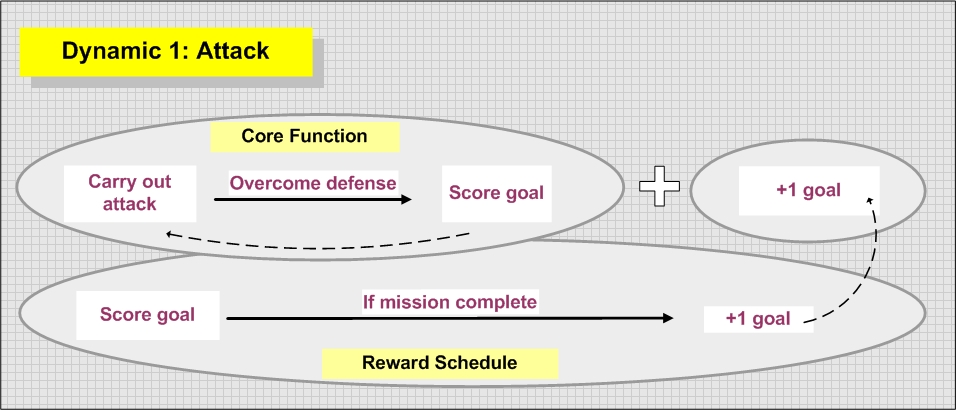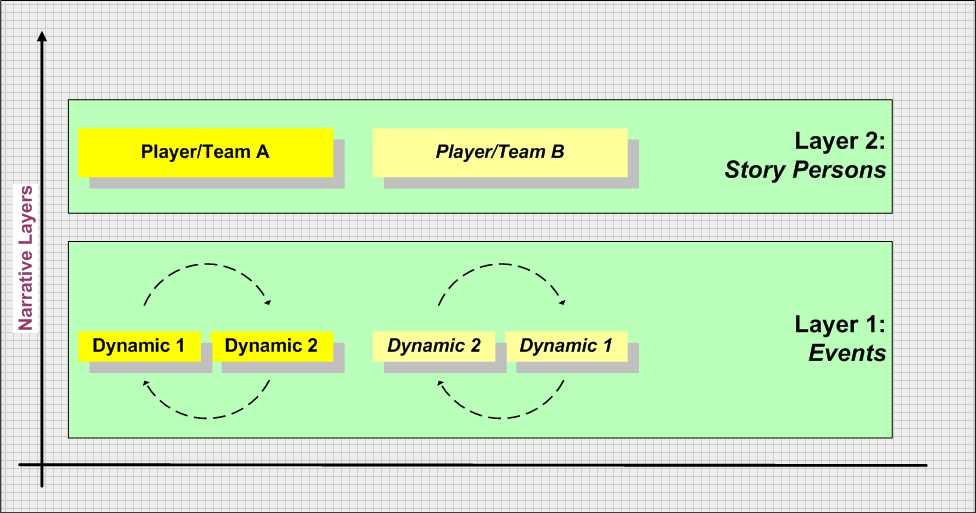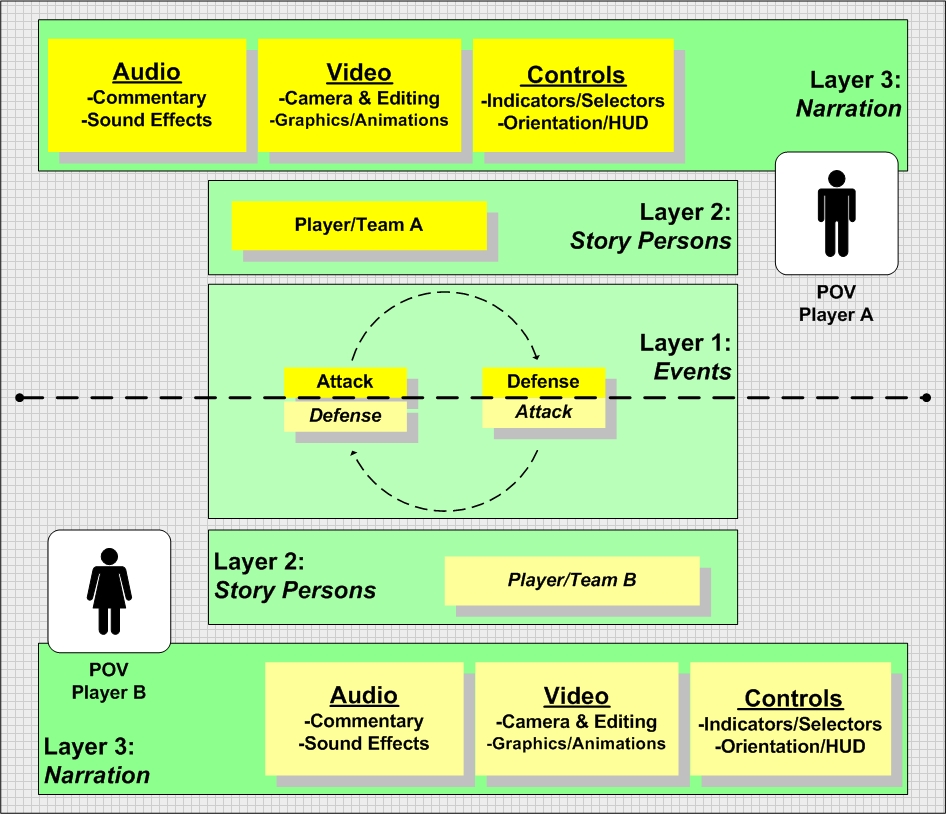
Featured Blog | This community-written post highlights the best of what the game industry has to offer. Read more like it on the Game Developer Blogs.
In this article I look at narrative structure in games which are said to have no story. As an example I've chosen soccer, a game that many would consider a formal or 'pure' game.

In previous articles I identified a number of narrative layers and tried to relate the core functions and story persons layers with reward structures. In this article I expand my analyses into the narration layer and explain how multiple POVs are maintained over the same sequence of events. The game I'm chosing for this is a popular branch of sport, Soccer. I have in mind two popular video game series as I conduct my analyses: EA Sport's FIFA and Konami's Pro Evolution Soccer.
Soccer: The Events Layer
Games like soccer are perceived as highly unpredictable due to the seemingly infinite possibility space that can be observed in the actions on the pitch. However, we can still identify certain patterns and speak of sequences of actions that articulate as core functions or events. I use the term dynamic to capture these broader patterns. In soccer, we can identify two such dynamics: Attack and Defense.
Lets have look at the Attack dynamic first:

The Attack Dynamic in Soccer
This dynamic, features many instances of core functions which all aim to reach a climax through scoring a goal. They are closely tied to the underlying reward structure: a succesful attack that results in a goal will bring an increase to the team's score and will ultimately help it to win the match. However, the aim of scoring is carried out against a defending opponent and attacks will be often terminated early on by these defenders.
We can break down the attack dynamic into smaller bits of action. These amount to the particular events that a player or team experiences on the pitch. The most common actions are: dribbles, runs, through balls, playing over the wings, pass the ball around, cross balls, long shots, set pieces, headers etc.
Lets have a look at the Defense dynamic now:

Defense Dynamic in Soccer
In this dynamic, the core functions are built around avoiding to conceed a goal. The underlying reward schedule to the core functions is to gain ball possession (the necessary step to reach an Attack state). Similar to the Attack dynamic, there are various actions that a player or team carries out while "in defense": man marking, zone defense, sliding tackles, headers, shot stopping, deflect crosses, make fouls etc. Again, the combination of these actions will amount to a sequence of events.
From Events to Story Persons: Multiplayer Narrative
During the match, a player/team will find itself constantly switching between these two dynamics. In that sense, it can be said that the events layer looks like a cycle of states. While this cycle of states keeps working on the Events layer, the whole process ultimately articulates on the story persons layer under a particular "character", that is, a player/team.

Dymanics (Events layer) Articulate Under Particular Characters (Story Persons layer)
However, it must be noted that a soccer match typically involves two such teams/players. The existence of more than one POV ultimately means that the single gameplay cycle is interpreted from the standpoint of different interests. Since the POVs belong to opposing sides, the cycle is perceived in a reversed manner by the involved parties. In other words, one team's Attack dynamic is the other team's defense dynamic (and vice versa). Within this narrative setting the players "serve" each other as antagonists.

Reversal of dynamics due to the impact of POV
Connecting to the Narration Layer
These different POVs are communicated through Narration. In the diagramm below we see how the dynamics that take place on the Events layer are communicated to the involved story persons via audio-visual expression and controls.
A complete picture of the narrative structure in a soccer game looks like this:

Multiplayer Narrative
It's easy to tell that the above diagram applies to a variety of multiplayer narratives. Modes like Capture the Flag over the LAN in a First Person Shooter, a round of Tennis against an online opponent on the Nintendo Wii Network or a party of Texax Hold 'em Poker over the internet can be all given as examples.
Read more about:
Featured BlogsAbout the Author(s)
You May Also Like








